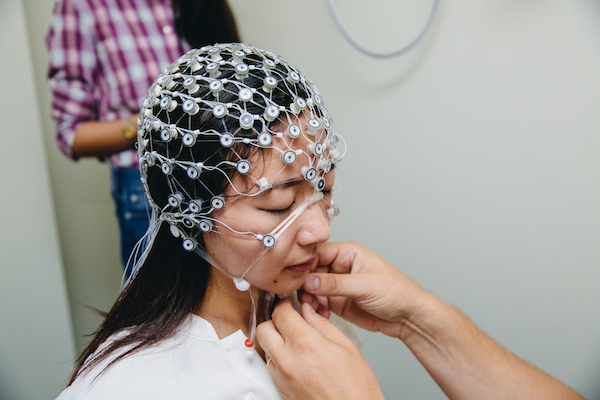The miracle of brain-computer interfaces
Published July 28, 2019
Bear with me. I'm going to try to explain something slightly abstract but incredibly interesting.
You, the brain reading this
Look at your hands. Admire your reflection in a mirror. It's you, right?
Wrong. That is not you. You are the brain inside that person. You are a chunk of meat piloting a bone-armored meatsuit, and that meatsuit's hands and feet are the only ways you can interact with the physical world. It is kinda weird to think of our limbs as tools. Our hands act as an extension of our brain into the physical world, a way for our abstract thoughts to influence the concrete world. And it's our best tool because it's so generalizable; I'm currently using the fingers on mine to hit my keyboard in specific combinations to write the words you're reading.
However, their generality leads us to create more specialized tools to make certain tasks easier for us. Hammers allow us to piece together pieces of wood with bits of metal. Pianos make it easy to create specific sounds reliably. Keyboards enable precise electron changes on tiny, tiny silicon chips. We use our general tools to create and harness more specialized ones.
But there's a problem. Whenever we use a tool, we are actually trading use of our hands or feet for use of a more specialized tool. Even if we know exactly how we want to use the tool, we have to figure out how to best interact with it. This is an added learning curve called muscle memory.
This might not seem like a big deal to most people, but that's because most people have working hands or feet. They have general tools with which to harness specialized ones. But what if you're already using both your hands and just need another one, like a surgeon in a 36 hour surgery who just needs a nurse to hold a piece of skin out of the way? What if you've lost the ability to control your limbs in bike accident, or have terribly trembling hands from Parkinson's as a result of a random mutation? These people can't harness any tools! They're out of luck in today's technology.

Not just a better keyboard
This is where brain-computer interfaces completely dominate current, existing interfaces. While a joystick might allow us to replace our arms with a more powerful and steady robotic arm, a brain-computer interface allows us to use a robotic arm in addition to the two incredibly versatile arms we already have. BCIs aren't just better keyboards; they're the only tool that doesn't require us to give up one of our general tools to use a more specific one.
I'm not saying BCIs will allow us all to be Doc Ock, or that they'll cure disability forever. There'll still be a learning curve, just like for learning to type. But inputs can now occur at the speed of thought, instead of being limited at the speed at which we can move our fingers. We can connect our brains and interact directly with the world around us, instead of having to go through our muscles as middlemen.
What it means for us
When computers first became commercially available in the 1960s, they revolutionized the way we did work. Calculations could be done instantly; large spreadsheets of data could be manipulated at scale. But today, despite all the advances we've made in computing, we do work at the same rate as a worker in the 1960s. We're limited fundamentally by the speed of our interface, the keyboard and mouse.
BCIs are currently still in the early stages of development, and won't be feasible for at least another 10 years. But with a working brain-computer interface, we'll open an entirely new field of ways to connect our brains to the world around us. It's time for a new interface.
in the bent get get